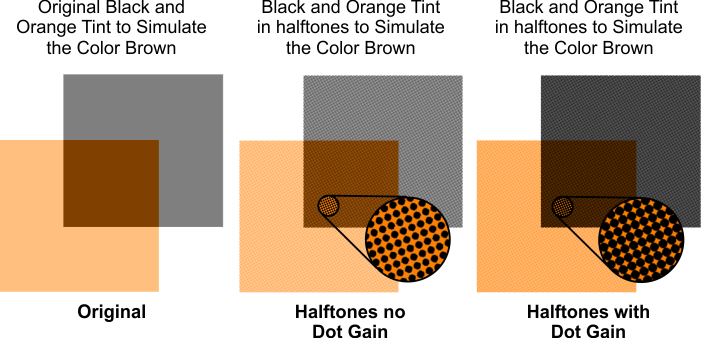Dot gain is an important factor to take into account in the screen printing process. Dot gain in simple terms is a phenomenon of halftone dots enlarging or expanding after they are applied to a t-shirt of sub straight.

The chart above shows how dot gain occurs and how it effects color grayscale or color density in the screen printing process.
When screen printing ink is pushed across a halftone screen. The ink passes through the screen dots and then expand after they have been printed.
The grayscale chart on the left is accurate, the chart on the right simulates how dot grain would change the grayscale densities.
Since color simulation in simulated process screen printing is done using color separations and gradients that are comprised of numerical grayscale densities. Changes in those densities from dot gain will result in changes of the screen printed image or graphics and color reproduction accuracy. Resulting a lower quality color screen printing.

The chart above demonstrates the effect of dot gain even on simple simulated color with halftone screen printing. On the left the original color simulation with 50% black and 50% orange to simulate the brown color. In the middle the original has been converted to interlocking halftones with no dot gain. On right you can see the effects of dot gain on the color simulation. Because of dot gain the color densities are not longer 50% black and 50% orange. Because the dots have gained and become bigger. As a result the halftone color simulation is no longer accurate making the color look like a much darker brown.

You can see in the image above how dot gain can effect screen printed color images or graphics. Once again the original image is on the left. The original converted to halftones with no dot gain in the middle and the original converted to halftones with dot gain on the right. Due to halftone dot gain the image color no longer accurate when compared to the original. The color has been changed because dot gain has changed the densities in the color gradients changing the color in the image. Which would result of poor color simulation and reproduction on the printing press.

